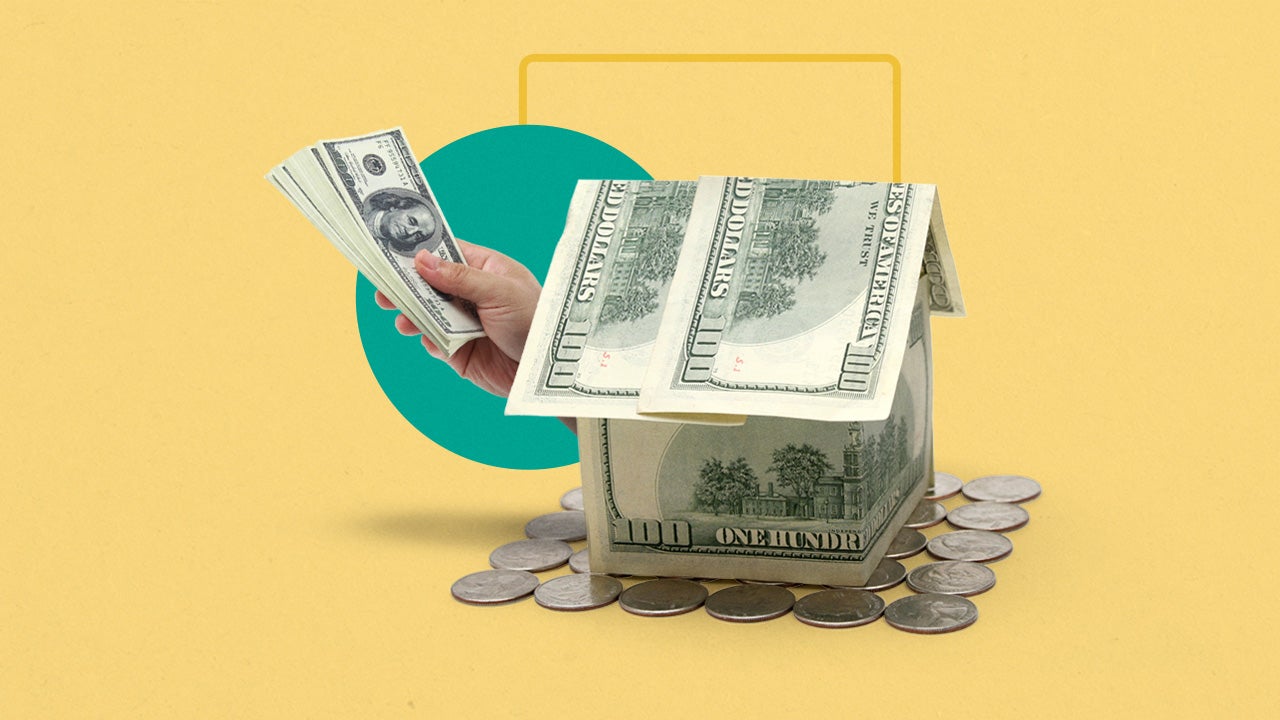When should you refinance your mortgage?




Key takeaways
- Refinancing your mortgage could make sense for several reasons: lowering your interest rate, taking cash out or switching to a fixed-rate loan.
- For most borrowers, the ideal time to refinance is when market rates have fallen below the rate on their current loan.
- If you want to refinance, calculate the break-even point so you’ll know exactly how long it’ll take to reap the savings.
Borrowers tend to think about refinancing their mortgage when interest rates are sinking. But actually, there can be several reasons that make a particular time the right time to swap out your old loan for a new one. There are several kinds of refinance options out there, each with unique pros and cons.
Here’s how to figure out when a refi could make financial sense for you — and when it might be better to consider other options.
When should you refinance your home?
When deciding if refinancing is right for you, current mortgage rates are probably the first thing to consider. But there is more to the decision than those interest percentages by themselves. Bill Packer, chief operating officer of reverse mortgage lender Longbridge Financial, LLC, outlines a trio of factors to consider:
- The after-tax monthly savings (new payment compared to old payment, after any tax-favored treatment)
- The amount of time that you intend to be in the home
- The cost of obtaining the new mortgage
Once you know these three things, you can calculate your return and see if it is positive, says Packer.
Reasons to refinance your mortgage
For many borrowers, it’s a good idea to refinance if you can lower your interest rate and plan to stay in your home long enough to recoup the refinance closing costs.
Here are the key reasons to consider refinancing:
Lower your interest rate
If interest rates have dropped since you first obtained your mortgage, a rate-and-term refinance can provide you with a lower rate. Ideally, that rate should be one-half to three-quarters of a percentage point lower than your current rate.
You might also qualify for a better interest rate if your credit score has improved since taking out your current loan. So, check your score, and your credit report, before applying. The best mortgage refinance rates go to those with a score of at least 740.
Pay for large expenses
You can do a cash-out refinance to tap your home’s equity for ready money. You can use these funds for any purpose, such as:
- Lowering or paying off high-interest debt
- Renovating your home
- Paying college tuition
- Investing in property
Eliminate private mortgage insurance (PMI)
If your home’s value has increased, increasing your equity stake, you could refinance your conventional loan to get out of paying private mortgage insurance (PMI) right away, or at least earlier.
Change your loan structure or term
If you’re not far into repaying a 30-year mortgage and want to pay it off sooner, you could refinance to a shorter loan term, such as 15 years. This will save you money on interest, as well.
Likewise, if you have an adjustable-rate mortgage that’s about to reset and enter the variable-rate period, you could refinance to a fixed-rate loan to guarantee predictable monthly payments.
It’s important to determine your break-even point. Make sure the benefits outweigh the costs.— Linda Bell, Senior Writer, Bankrate
When you should not refinance
There are times when refinancing isn’t the best option. Generally, it might not be smart to refinance for any of these reasons:
- You will be splurging on discretionary purchases: Don’t fall into the trap of putting your home on the line to spend the refinance savings or cash-out proceeds on one-time expenses like a vacation or car. In general, it’s better to save for these costs.
- You’re far along in your mortgage: If you’re already at least halfway through the loan term, it’s unlikely you’ll save money refinancing. You’ve already reached the point where more of your payment is going to loan principal than interest; refinancing now means you’ll restart the clock and pay more toward interest again.
- Your other financial goals will suffer: Paying off your loan term earlier is often fine — unless you shortchange important financial goals: building an emergency fund or retirement savings, for example.
- You will pay more interest: If your credit score or debt-to-income ratio is not great — maybe has even worsened since the original loan — you could well be offered a higher interest rate on the refi. That, of course, will make your loan more costly overall.
- You plan to sell your home soon: If you’re selling soon, you’re unlikely to be in the home long enough to recover refinancing costs. (This is why calculating the break-even point — see below — is key.)
When you should not refinance
There are times when refinancing isn’t the best option. Generally, it might not be smart to refinance if:
- You will be splurging on discretionary purchases: Don’t fall into the trap of putting your home on the line to spend the refinance savings or cash-out proceeds on one-time expenses like a vacation or car. In general, it’s better to save for these costs.
- You’re far along in your mortgage: If you’re already at least halfway through the loan term, it’s unlikely you’ll save money refinancing. You’ve already reached the point where more of your payment is going to loan principal than interest; refinancing now means you’ll restart the clock and pay more toward interest again.
- Your other financial goals will suffer: Paying off your loan term earlier is often fine — unless you shortchange important financial goals: building an emergency fund or retirement savings, for example.
- You will have a higher interest rate: If your credit score is not great, or current interest rates are much higher than when you got your mortgage, refinancing will make your loan more costly overall.
- You plan to sell your home soon: If you’re selling soon, you’re unlikely to be in the home long enough to recover refinancing costs. (This is why calculating the break-even point — see below — is key.)
- Your current mortgage has a prepayment penalty: The penalty must be considered a cost of refinancing and assessed like any other costs. Though a one-time charge, iIt will impact your ability to recoup your refinance costs quickly.
How much can I save by refinancing?
The amount you can save by refinancing depends on several factors, including your closing costs and whether you’ve chosen the right kind of refinance for your needs.
If you refinance to a $250,000 loan and the closing costs total 2 percent of that, for example, you’d owe $5,000 at closing. You won’t begin to reap the benefits of a refinance until you reach the break-even point — when the amount that you save exceeds the amount you spent to do the refi, given its closing costs, upfront charges, etc.
To determine the break-even point on your refinance, divide the closing costs by the amount you’ll save each month with your new payment.
Let’s say that refinancing will save you $150 per month, and the closing costs on the new loan are $4,000.
$4,000 / $150 = 26.6 months
So, if you were to close your new loan today, you’d officially break even just over two years and two months from now. If you live in the home for five years after refinancing, the savings really start to add up — $9,000 total.
You can use our refinance break-even calculator to figure out how long it will take for the cost of a mortgage refinance to pay for itself. If you think you might sell the home before your break-even point, refinancing might not be worth it.
Example: Deciding when to refinance a mortgage
Let’s say you took out a 30-year mortgage for $320,000 at a fixed interest rate of 6.23 percent. Your monthly payment would be $1,966. Over the life of that loan, you’d pay about $707,901, which includes $387,901 in interest.
Now say about 15 years into the loan, you’ve paid $86,551 toward the principal and $257,499 in interest and you want to refinance the remaining $233,449 of your principal balance with a new 15-year fixed-rate loan at 5.11 percent.
The new loan would trim your monthly mortgage payment to $1,859 per month, giving you an additional $107 of wiggle room in your monthly budget. Over the life of the loan, you’d pay $334,756, of which $101,307 would be interest. Add in the $344,050 in principal and interest you paid on the previous mortgage, and your total cost will be $678,806.
By refinancing, you’d not only lower your monthly payments — you’d see a long-term savings of about $30,000.
| Current mortgage | Refinance | |
|---|---|---|
| Monthly payment | $1,966 | $1,859 |
| Interest rate | 6.23% | 5.11% |
| Total payments | $707,901 | $678,806 |
| Savings | $0 | $29,095 |
Is refinancing worth it?
If it frees up money in your monthly budget, reduces the overall cost of the loan or helps you achieve some other financial goal, refinancing can be well worth the work and money.
“It’s important to determine your break-even point,” says Linda Bell, senior writer for Bankrate. “Remember that refinancing has costs just like a regular mortgage. While your goal might be a shorter loan term or a lower interest rate, if you plan to sell your home in a few years, it might not make financial sense. Make sure the benefits outweigh the costs.”
Mortgage refinance FAQ
-
Refinancing a mortgage involves swapping out your current home loan for a new one, often with a different rate and term. The process is similar to when you initially purchased your home. Our mortgage refinance guide has all the details.
-
How soon you can refinance a mortgage varies by the loan type. Some lenders require you to wait at least six months to refinance a conventional loan, particularly if they were the ones who originated it. Others might let you refinance with no waiting period. Government-backed loans have their own requirements.
-
It depends on your mortgage product and financial situation. To decide if the time is right, conduct a cost-benefit analysis to learn when you’ll break even. Consider using our mortgage refinance calculator to get an idea of potential cost savings (or losses).
Additional reporting by Ashlee Tilford



